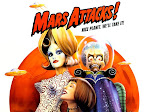
MOJAVE, Calif. (AP) - The sleek, bullet-shaped spacecraft is about the size of a large business jet - with wide windows and seats for six well-heeled passengers to take a thrill ride into space.
It's billed as the world's first commercial spaceship, designed to be carried aloft by an exotic jet before firing its rocket engine to climb beyond the Earth's atmosphere.
In a Hollywood-style rollout, Virgin Galactic on Monday took the cloak off SpaceShipTwo, which had been under secret development for two years in the Mojave Desert. The company plans to sell suborbital space rides for $200,000 a ticket, offering passengers 2 1/2-hour flights that include about five minutes of weightlessness.
Blaring music and a laser show heralded the rollout of SpaceShipTwo as it glided down a runway mated to its mothership and came to a stop before a throng of wannabe astronauts, dignitaries and VIPs who shivered in the desert cold for the splashy unveil.
"Isn't this the sexist spaceship ever?" said British billionaire and Virgin Galactic founder Sir Richard Branson, who partnered with famed aviation designer Burt Rutan on the venture.
The stubby-winged spaceship possesses a slender fuselage that narrows at the nose and tail. Once in space, its unique twin tail booms can pivot upward to increase drag and allow the spaceship to plunge like a shuttlecock back into the atmosphere.
SpaceShipTwo's debut marks the first public appearance of a commercial passenger spacecraft. California Gov. Arnold Schwarzenegger and New Mexico Gov. Bill Richardson were on hand to christen it "VSS Enterprise" by breaking champagne bottles on the craft's nose.
Branson hopes to begin passenger flights out of New Mexico sometime in 2011 after a series of rigorous safety tests. The entrepreneur said he, his family and Rutan will be the first to fly on SpaceShipTwo.
SpaceShipTwo is based on Rutan's design of a prototype called SpaceShipOne. In 2004, SpaceShipOne captured the $10 million Ansari X Prize by becoming the first privately manned craft to reach space.
Since that historic feat, engineers from Rutan's Scaled Composites LLC have been laboring in the Mojave Desert on a larger design suitable for commercial use.
Rutan, who has always stressed safety, said his goal is to make his private spaceflight venture safer than government space programs and on par with the early commercial airliners.
Some 300 clients have paid the $200,000 ticket or placed a deposit, according to Virgin Galactic.
The last time there was this level of hoopla in the high desert was a little more than a year ago when Branson and Rutan trotted out to great fanfare the twin-fuselage mothership, White Knight Two, that will carry SpaceShipTwo.
This latest affair was far more elaborate. Two tent complexes were custom-built for the occasion. Virgin Galactic also handed out free black windbreakers and hats with its logo. Servers passed around pastries and finger food before the unveiling and champagne afterward.
The one thing Virgin Galactic failed to choreograph was the weather. Branson and his deputies repeatedly apologized to guests for the howling winds that shook the see-through tent.
Despite the hype, hard work lies ahead before space journeys could become as routine as air travel.
Flight testing of White Knight Two has been ongoing for the past year. The first SpaceShipTwo test flights are expected to start next year, with full-fledged space launches to its maximum altitude in 2011.
SpaceShipTwo, built from lightweight composite materials and powered by a rocket engine, is similar to its prototype cousin with three exceptions. It's twice as large, measuring 60 feet long with a roomy cabin about the size of a Falcon 900 executive jet. It also has more windows including overhead portholes. And while SpaceShipOne was designed for three people, SpaceShipTwo can carry six passengers and two pilots.
"It's a big and beautiful vehicle," said X Prize founder Peter Diamandis, who has seen SpaceShipTwo during various stages of development.
Space travel has been limited so far to astronauts and a handful of wealthy people who have shelled out millions to ride Russian rockets to the international space station.
The debut of Branson's craft could not come sooner for the scores of wannabe astronauts eager to pay big money to experience zero gravity.
Rene Kaerskov, a 43-year-old would-be space tourist who splits his time between Los Angeles and Hong Kong, said he choked up at the sight and could not wait to climb aboard.
"It will be a top-of-the-line adventure," he said.
After SpaceShipOne's history-making flights, many space advocates believed private companies would offer suborbital space joyrides before the end of this decade. Virgin Galactic once predicted passengers could fly into space by 2007.
George Washington University space policy scholar John Logsdon called the milestones "measured progress." He was not surprised the commercial space industry is still in its infancy.
"Their business will collapse if they had an accident in one of the early flights. I'm sure they're being cautious," he said.
Tragedy struck in 2007 when an explosion killed three of Rutan's engineers during a routine test of SpaceShipTwo's propellant system. The accident delayed the engine's development.
Virgin Galactic plans to operate commercial space flights out of a taxpayer-funded spaceport under construction in New Mexico.
SpaceShipTwo will be carried aloft by White Knight Two and released at 50,000 feet. The craft's rocket engine then burns a combination of nitrous oxide and a rubber-based solid fuel to climb more than 65 miles above the Earth's surface.
After reaching the top of its trajectory, the craft will fall back into the atmosphere and glide to a landing like an airplane. Its descent is controlled by "feathering" its wings to maximize aerodynamic drag.
Virgin Galactic expects to spend more than $400 million for a fleet of five commercial spaceships and launch vehicles.
It's not the only player in the commercial space race. A handful of entrepreneurs including Amazon.com Inc. Chief Executive Jeff Bezos, computer game programmer John Carmack and rocketeer Jeff Greason are building their own suborbital rockets.
---





































No comments:
Post a Comment